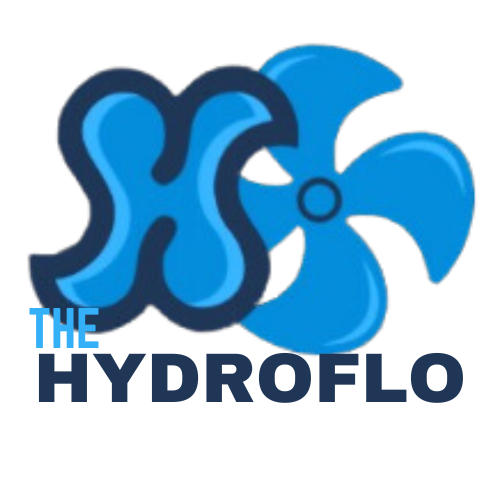
From Idea to Product: Your 3D Printing Journey with HydroFlo
Your Idea, Our Printer: The Journey from a File to a Finished Product
Introduction: The Spark of Creation
Every great product starts with a single moment—an idea. Whether it came to you in the middle of a meeting, while walking the dog, or just before falling asleep, that "lightbulb moment" sparked something powerful. It's the instant your creativity demanded to be more than just a fleeting thought. At HydroFlo’s Custom 3D Printing Service, we’ve made it our mission to transform those moments into something real. This is the journey your idea takes—from digital file to finished product.
Section 1: The Digital Blueprint – Capturing Your Vision
Once inspiration strikes, the first step is translating your vision into a file. Most customers upload an STL (stereolithography) or OBJ (object) file, the two most common formats for 3D printing. These formats define the geometry and surface texture of your creation. Whether you used CAD software like Fusion 360 or Tinkercad, or a 3D modeling tool like Blender or SolidWorks, your digital file is the DNA of your final product.
Our platform makes the upload process seamless. Simply drag and drop your file, select your materials, and choose your desired finish. Behind the scenes, our automated system runs checks for printability—scanning for wall thickness issues, overhangs, and file errors. This step ensures that what you’ve designed is not only printable but also durable and functional.
According to a report by Grand View Research, the global CAD software market was valued at over $9 billion in 2023, showing how integral digital design tools have become to modern manufacturing. Source
Section 2: Slicing and Preparation – The Bridge Between Idea and Reality
Once your file passes inspection, it's prepped for printing in a process known as “slicing.” Our in-house team uses slicing software to convert your 3D model into layers—horizontal cross-sections that the printer will build up one at a time.
This is where your vision really begins to take shape. Settings like layer height, infill density, print speed, and support structures are all fine-tuned to your project’s needs. For instance, a highly detailed figurine might require a smaller nozzle and higher resolution, while a durable part might favor thicker layers and reinforced infill.
Each slice is carefully calculated to ensure structural integrity and aesthetic fidelity. Once slicing is complete, the G-code (the machine’s language) is sent to our 3D printer queue, and your idea is ready to be born.
As of 2024, there are over 2.1 million 3D printers in active use globally across industries—from aerospace to medical devices. Source
Section 3: Print in Progress – Where Magic Meets Mechanics
Now comes the most mesmerizing part: the print itself. Picture this—a heated nozzle glides across a build plate, laying down material with precise accuracy. Layer upon layer, your concept takes shape. It’s not magic, but it feels like it.
Depending on your chosen material—PLA, ABS, PETG, resin, or even specialty filaments like carbon fiber or wood-infused plastics—the print process varies. We employ FDM (Fused Deposition Modeling) and SLA (Stereolithography) technologies depending on your design’s complexity, durability, and visual requirements.
During this phase, we monitor for anomalies: stringing, warping, misalignment, or temperature issues. Our skilled technicians and AI-based error detection systems work in tandem to guarantee quality. Every layer is a step closer to the tangible realization of your dream.
Research by the Wohlers Report indicates that the 3D printing industry surpassed $20 billion in global revenue in 2023, a testament to the growing trust in additive manufacturing. Source
Section 4: Post-Processing – Where Precision Meets Polish
After printing, your item isn’t quite ready for shipping. Post-processing is where we clean, refine, and finish your product. Supports are removed, surfaces are smoothed, and parts are cured or hardened depending on the material.
For resin prints, this might include alcohol baths and UV curing. For FDM prints, we’ll sand, prime, and even paint if you've selected custom finishing. Post-processing enhances both function and form—ensuring your part not only looks incredible but performs as expected.
We also conduct final quality checks. Dimensional accuracy is tested with calipers. Surfaces are visually inspected and handled to confirm texture and strength. Only after it meets our high standards does your product move on to final packing.
Section 5: Fulfillment – From Our Hands to Yours
The last step is the most exciting—packaging and delivery. We pack each order securely, using eco-friendly materials where possible. Then it's handed over to our shipping partners, and tracking information is sent directly to your inbox.
There’s a thrill in unboxing something you imagined and brought to life. It’s more than a product—it’s a manifestation of your creativity, your problem-solving, your purpose.
Whether you printed a prototype, a tool, a model, or a piece of art, it's now in your hands. And with it, the confidence that you can build again. Innovate again. Dream again.
According to McKinsey & Company, the use of advanced manufacturing methods like 3D printing can reduce product development time by up to 90%. Source
Conclusion: The Power of Making
From a spark in your mind to a product in your hand, this journey is nothing short of remarkable. At HydroFlo, we don’t just print objects—we bring ideas to life. Your imagination is the most valuable asset we work with. And every time you upload a file, you’re not just starting a print job—you’re starting a story.
Ready to see your idea come to life? Hit that upload button and let's get started!
